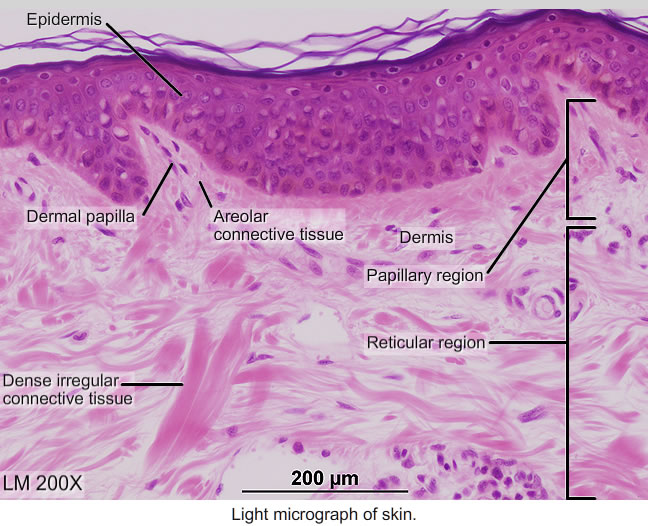The Dermis
- Understand the functions of the dermis.
- Identify the cellular and structural components of the dermis.
- Identify the two regions of the dermis: papillary and reticular.
Mouse over each label to view definition

Dermis
The dermis is located deep to the epidermis and helps to anchor the epidermis in place. It consists of various cells, connective tissue, blood vessels, nerves and nerve (sensory) receptors, and blood vessels. The dermis provides support and resiliency to the skin as well as nutrient exchange for the avascular epidermis.
Components
The dermis is composed of connective tissue containing abundant collagen and elastic fibers, adipocytes, fibroblasts, and macrophages (phagocytic white blood cells).
Located within the dermis are nerves and nerve receptors, smooth muscles, glands, hair follicles, and blood vessels. The blood vessels are involved in thermoregulation and nutrient and gas exchange. The abundant collagen fibers in the dermis provide strength and support, while elastic fibers provide the dermis with its elasticity.
Dermal regions
The dermis consists of the papillary and reticular regions.